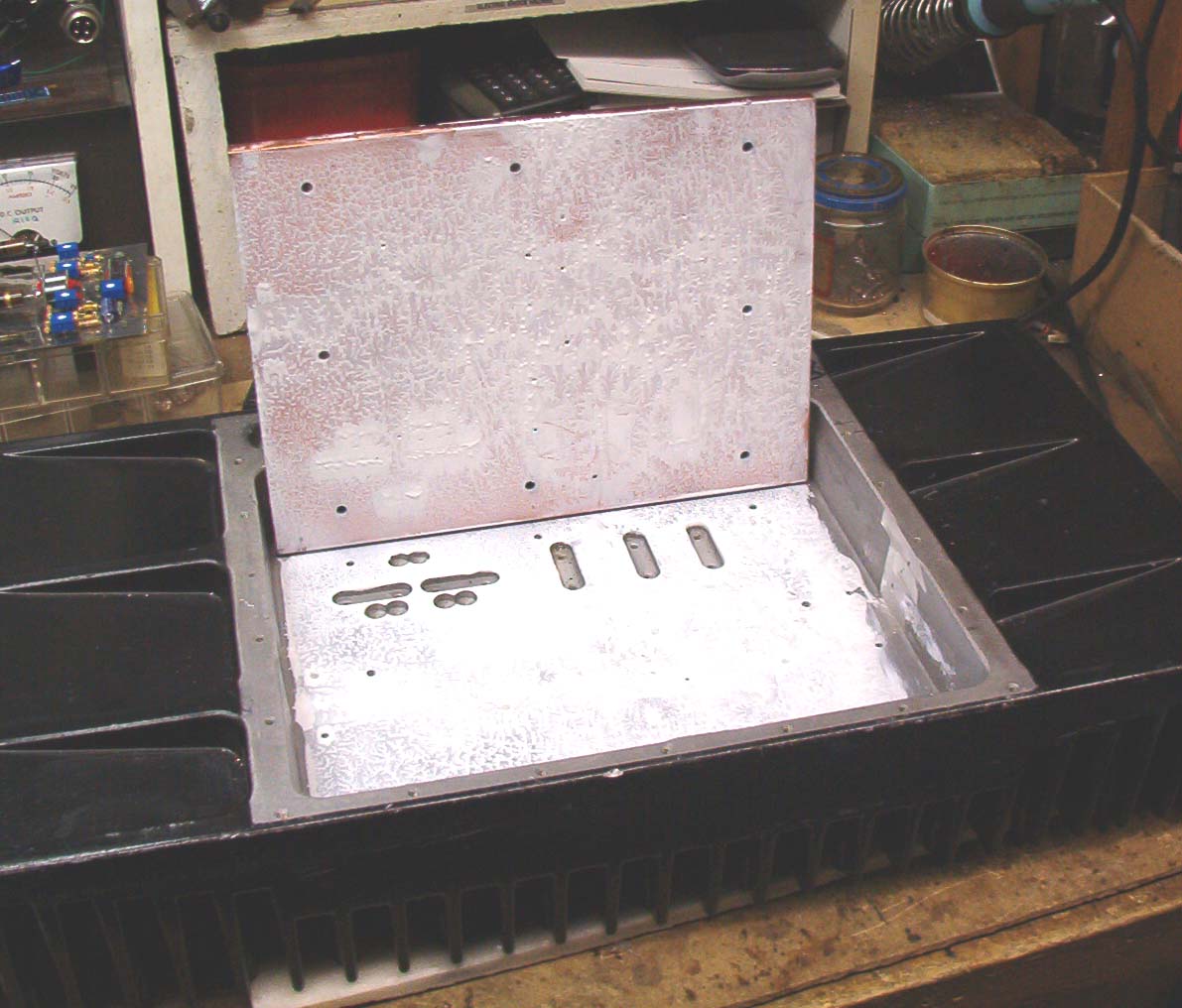
In addition to the tube-type amplifiers at AI2Q, a solid-state MOSFET amplifier is also used. It's based on the venerable K7ES Helge Granberg EB104 design, originally described in the 1980s in Motorola Engineering Bulletin 104.
The all-band STAR transceiver drives the EB104 amplifier by means of an IPA (intermediate power amplifier) that develops about ten watts of RF.

My EB104 version relies on a massive aluminum heat sink, which you can see on the front panel in the above photo. No cooling fans are used. The amplifier is usually run at a modest 300W output on CW, and about 600W PEP on SSB.
The following photos show some of the stages of construction of the EB104 board. The double-sided plated printed circuit board was supplied by Communication Concepts, Inc.
This photo shows the surplus heatsink prior to processing. It was originally used in a UHF amplifier deck, supplied by N1KMA. Thanks to N1YX's machine shop, the compartment dividers were milled away.
Here's a look at the 3/8" copper heat spreader that helps cool the four MRF150 devices. It's being tapped for mounting holes. The copper plate sits in the well in the heat sink.
The copper heat spreader is bolted to the heat sink, with an interposer layer of white thermal compound.

Here the board is prepped for attachment to the heat spreader.

With the circuit board populated, the MOSFETs are fitted to the board, making contact with the copper spreader. Thermal compound is applied between the MOSFET packages and the copper. Note the ESD (electro-static discharge) wrist strap (lower left corner) and spiral grounding cord.

Click here for more .....